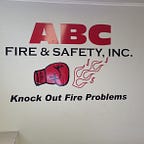Choosing the Right Fire Sprinkler System for Your Property
When it comes to fire safety, choosing the right fire sprinkler system for your property is a critical decision that can save lives and protect your assets. With various types of systems available, understanding their differences and applications is essential. This blog will guide you through the key considerations and factors to help you select the most suitable fire sprinkler system for your needs.
Understanding Fire Sprinkler Systems
Fire sprinkler systems are designed to automatically detect and suppress fires in their early stages. They consist of a network of pipes filled with water and sprinkler heads that activate when a fire is detected. The choice of system often depends on the type of property, its use, and specific fire risks.
Key Factors to Consider
1. Type of Property
The first step in choosing a fire sprinkler system is to consider the type of property you have. Different environments may require different systems:
- Residential Properties: Homes often benefit from wet pipe systems, which are filled with water and provide immediate response to fire.
- Commercial Properties: Businesses may require more complex systems, such as pre-action or dry pipe systems, depending on the nature of the business and specific fire risks.
- Industrial Facilities: High-hazard environments might need deluge systems or specialized sprinklers designed to handle combustible materials.
2. Building Layout
The layout of your property plays a significant role in determining the type of fire sprinkler system that will be most effective. Factors to consider include:
- Ceiling Height: Taller ceilings may require different sprinkler head types or spacing to ensure adequate coverage.
- Open Spaces vs. Compartments: Open spaces may benefit from a deluge system, while compartmentalized areas may work well with standard wet or dry pipe systems.
- Obstructions: Ensure that sprinkler heads are placed to avoid obstructions like furniture, shelves, or equipment that might hinder water distribution.
3. Local Regulations and Codes
Before selecting a fire sprinkler system, consult local building codes and fire safety regulations. Many jurisdictions have specific requirements for fire protection systems based on the type of building and its use. Compliance with these regulations is essential to avoid penalties and ensure safety.
4. Fire Risk Assessment
Conducting a fire risk assessment is crucial before making a decision. Identify potential fire hazards specific to your property, such as:
- Flammable Materials: Areas storing flammable liquids may require specialized systems.
- Electrical Risks: Properties with significant electrical equipment may benefit from dry pipe systems to prevent water-related damage.
- Cooking Equipment: Commercial kitchens often require Class K fire suppression systems tailored for grease fires.
5. Budget Considerations
While fire safety is an investment, it’s essential to consider your budget. The cost of fire sprinkler systems can vary widely based on:
- Type of System: Wet pipe systems are generally less expensive than dry pipe or pre-action systems.
- Installation Costs: Complex installations may require more labor and materials, impacting total costs.
- Maintenance: Factor in ongoing maintenance costs to ensure your system remains operational.
6. Professional Consultation
Engaging with a fire protection professional can provide invaluable insights. They can assess your property, recommend suitable systems, and ensure compliance with local codes. A professional can also help with the installation process, ensuring it meets all safety standards.
Types of Fire Sprinkler Systems
Understanding the different types of fire sprinkler systems can help you make an informed choice:
Wet Pipe Systems
- Description: These systems are always filled with water and are the most common type. They provide immediate response to fire.
- Best For: Environments that do not experience freezing temperatures, such as residential homes.
Dry Pipe Systems
- Description: These systems are filled with pressurized air and release water when a sprinkler head activates. They are ideal for cold environments.
- Best For: Areas prone to freezing, such as unheated warehouses.
Pre-Action Systems
- Description: These systems require two triggers — typically a smoke detector and heat activation. They are designed to minimize accidental discharges.
- Best For: Sensitive environments like data centers or museums.
Deluge Systems
- Description: These systems have open sprinkler heads and release large volumes of water simultaneously when activated. They are effective in high-hazard areas.
- Best For: Industrial settings or areas with flammable materials.
Foam Systems
- Description: Foam systems use a mixture of water and foam concentrate to suppress flammable liquid fires.
- Best For: Facilities handling flammable liquids, such as airports or chemical storage areas.
Conclusion
Choosing the right fire sprinkler system for your property is a vital step in ensuring safety and protection against fire hazards. By considering factors such as property type, layout, local regulations, fire risks, and budget, you can make an informed decision that meets your needs. Consulting with fire protection professionals can further enhance your understanding and help you choose the most effective system. Investing in a fire sprinkler system is not just about compliance; it’s about safeguarding lives and property. Stay proactive about fire safety and ensure your property is adequately protected.
